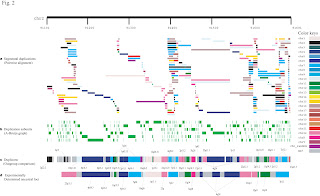 The next laptop you buy might be souped up with some gadgets inspired by top secret satellite systems. Engineers from UC San Diego are shrinking down the "phased array" chips that for years have been used on ships and airplanes to detect incoming ships, planes and missiles.
The next laptop you buy might be souped up with some gadgets inspired by top secret satellite systems. Engineers from UC San Diego are shrinking down the "phased array" chips that for years have been used on ships and airplanes to detect incoming ships, planes and missiles.This is yet another transfer of military technology to the commercial world. Intel is funding a project here at UCSD to develop laptop gadgets capable of blazing fast data transfer over radio waves.
Check out the new press release from UC San Diego here. There is very little written in the popular media about phased array chips, but you can get a start at Wikipedia.
UPDATE NOV 15:
The UCSD student newspaper, The Guardian, ran a story on this research.
"According to Gabriel Rebeiz, the UCSD electrical engineering professor who proposed and oversaw the project, the chip breaks many world records in its intricacy and compact size.
You can read the full UCSD Guardian story here.






